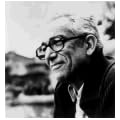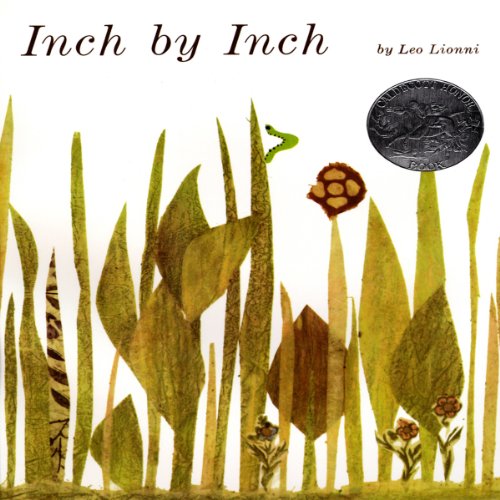author spotlight
“From time to time, from the endless flow of our mental imagery, there emerges unexpectedly something that, vague though it may be, seems to carry the promise of a form, a meaning, and, more important, an irresistible poetic charge.”—Leo Lionni
Leo Lionni wrote and illustrated more than 40 highly acclaimed children’s books. He received the 1984 American Institute of Graphic Arts Gold Medal and was a four-time Caldecott Honor Winner—for Inch by Inch, Frederick, Swimmy, and Alexander and the Wind-Up Mouse. Leo Lionni died in October of 1999 at his home in Tuscany, Italy, at the age of 89.
ABOUT THE AUTHOR
“Of all the questions I have been asked as an author of children’s books, the most frequent one, without doubt, has been ‘How do you get your ideas?’ Most people seem to think that getting an idea is both mysterious and simple. Mysterious, because inspiration must come from a particular state of grace with which only the most gifted souls are blessed. Simple, because ideas are expected to drop into one’s mind in words and pictures, ready to be transcribed and copied in the form of a book, complete with endpapers and cover. The word get expresses these expectations well. Yet nothing could be further from the truth.
“It is true that, from time to time, from the endless flow of our mental imagery, there emerges unexpectedly something that, vague though it may be, seems to carry the promise of a form, a meaning, and, more important, an irresistible poetic charge. The sense of instant recognition with which we pull this image into the full light of our consciousness is the initial impulse of all creative acts. But, though it is important, it produces no more than the germ of an idea. Each book, at the birth of its creative history, has such a moment. Some are fortunate enough to have, from the outset, a strongly identified hero, one with an inescapable destiny. Others are blessed with a promising beginning, or perhaps with the vision of an ending (which means working backwards to a surprise opening). Others stem from a clearly articulated conflict situation. Sometimes, I must admit, the motivations of a book may be found in a sudden, unreasonable urge to draw a certain kind of crocodile. And it may even happen that in the dark of our minds there appears, out of nowhere, a constellation of words that has the bright, arrogant solidity of a title. Only last night I was jolted out of a near-slumber by the words the mouse that didn’t exist. I am sure that, temporarily tucked away in my memory, they will eventually become the title of a story for which as yet I have no idea.
“To shape and sharpen the logic of a story, to tighten the flow of events, ultimately to define the idea in its totality, is much like a game of chess. In the light of overall strategy, each move is the result of doubts, proposals, and rejections, which inevitably bring to mind the successes or failures of previous experiences.
“Inspirational raptures may happen, but most books are shaped through hard, disciplined work. Creative work, to be sure, because its ingredients come from the sphere of the imaginary. But the manipulation of these ingredients requires much more than mere inclination or talent. It is an intricate process in which the idea slowly takes form, by trial and error, through detours and side roads, which, were it not for the guidance of professional rigor, would lead the author into an inextricable labyrinth of alternatives.
“And so, to the question ‘How do you get your ideas?’ I am tempted to answer, unromantic though it may sound, ‘Hard work.’ ”
Leo Lionni has gained international renown for his paintings, graphic designs, illustrations, and sculpture, as well as for his books for children. He was born in Holland in 1910 of Dutch parents, and although his education did not include formal art courses (in fact, he has a doctorate in economics from the University of Genoa), he spent much of his free time as a child in Amsterdam’s museums, teaching himself to draw.
Lionni’s business training gradually receded into the background as his interest in art and design grew. Having settled in Milan soon after his marriage in 1931, he started off by writing about European architecture for a local magazine. It was there that he met the contacts who were to give him a start as a professional graphic designer. When he moved to America in 1939, Lionni was hired by a Philadelphia advertising agency as art director. Later he became design director for the Olivetti Corporation of America, and then art director for Fortune magazine. At the same time, his reputation as an artist flourished as he began to exhibit his paintings and drawings in galleries from New York to Japan.
Lionni launched his career as an author/illustrator of books for children in 1959. Originally developed from a story he had improvised for his grandchildren during a dull train ride, Little Blue and LittleYellow was the first of what is now a long list of children’s picture books, including four Caldecott Honor Books.
Read more
Read less











